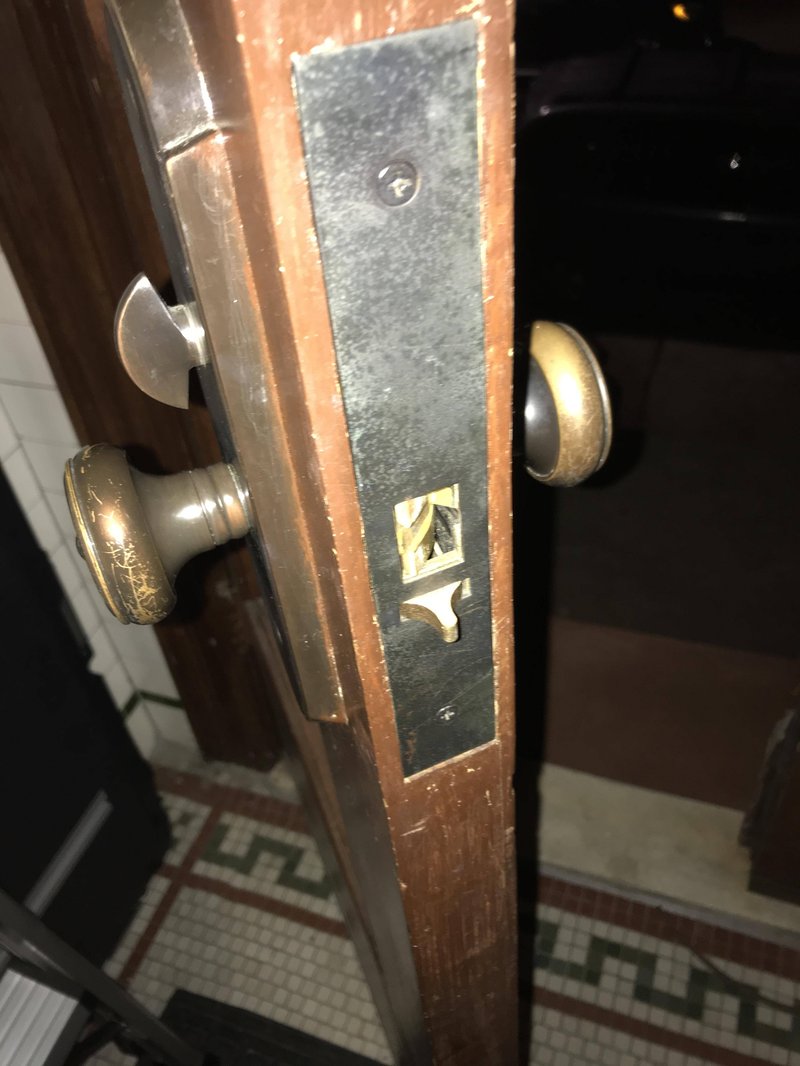
Understanding why your door knob’s thumbturn isn’t engaging the latch can save you time, money, and a few headaches. Let’s unpack this mystery together, exploring various reasons and solutions, so you can get back to peacefully coming and going as you please.
Common Reasons Your Thumbturn Won’t Engage the Latch
Several factors could prevent the thumbturn from engaging the latch. First up is misalignment. Over time, door frames or knobs may warp slightly, causing misalignment between the thumbturn and the latch mechanism. It’s a common issue, especially in homes with fluctuating temperatures and humidity. If the latch can’t properly catch, you’ll notice it just spins without securing the door.
Another possibility is a worn-out or damaged component. Like any mechanical part, the internal mechanisms of your door knob can wear down. If the thumbturn feels loose or turns too easily, chances are, something inside is amiss. You might find that the connecting rod or spring has broken, which means the thumbturn can’t push the latch out of the way.
Finally, dirt and grime can sneak into the mechanism. Just like how dust can clog a vacuum, dirt can hinder the smooth operation of your door lock. If you live in a particularly dusty area or haven’t cleaned your lock in a while, it’s worth checking for buildup inside.
Troubleshooting Misalignment Issues
Let’s dive into what to do if you’ve found misalignment to be the culprit. First, check the screws. If the screws on the knob are loose, they can cause misalignment. Use a screwdriver to tighten them—this might just do the trick.
Next, consider if the door itself is sagging. This can happen with age, especially in wooden doors. If you notice gaps at the top or bottom of the door, it might need a little adjustment. Sometimes, using a level can help you determine if the door is straight. If it’s not, you might need to shim or adjust the hinges.
Lastly, don’t hesitate to remove the knob and latch plate entirely if the problem persists. Align everything before reassembling. It’s like assembling IKEA furniture—one misstep and nothing fits!
Handling Worn-Out or Damaged Components
If you suspect your thumbturn mechanism is worn out, start by *opening up* the knob. Grab your screwdriver and carefully remove the knob from the door. Inspect the parts closely; you might find a broken spring or even a stripped gear.
Repair or replace? That’s the next question. Sometimes, replacing just one part will get everything back in working order. But if you’re already in there and the whole mechanism looks tired, it might be better to replace the entire knob. Brands like Schlage or Kwikset offer various options that are both reliable and stylish.
Before reassembling, apply a small amount of lubricant to the moving parts. This can help keep everything running smoothly. Just be careful not to overdo it—too much grease can attract dirt over time.
Cleaning the Lock Mechanism
Cleaning your door knob’s lock mechanism can often solve problems related to dirt buildup. You might be surprised how much of a difference a little cleaning can make!
Start by removing the knob as we discussed earlier. Once you have access to the gears and latch, use a small brush, like an old toothbrush, to gently remove dirt and debris. A can of compressed air can help blow out dust that’s settled in hard-to-reach places.
For a deeper clean, consider using a mild cleaner. Just be sure to use it sparingly, and avoid harsh chemicals that could damage the finish. After cleaning, reassemble everything and apply lubricant to keep it operating smoothly.
Also, don’t forget to periodically check your door knob for dirt buildup. Think of it as a little maintenance routine—like changing the oil in your car. A few minutes of attention now can save you a lot of hassle later.
When to Call a Professional
Let’s be real—sometimes DIY just isn’t enough, and that’s okay. If you’ve tried everything and the thumbturn still won’t engage the latch, it might be time to call in a pro. This isn’t just about convenience; it’s about your safety.
A locksmith can quickly diagnose issues that might not be obvious to the untrained eye. They have the tools and expertise to fix things—often in a fraction of the time it would take you to do it yourself. Plus, if the lock is damaged beyond repair, they can recommend a suitable replacement that fits your needs.
Remember, your door is your first line of defense. Keeping it operational and secure is crucial. If you feel uncertain about tackling the issue alone, don’t hesitate to seek professional help.
Preventive Measures for Future Problems
Now that you’ve tackled the immediate problem, let’s chat about preventing future headaches. Regular maintenance is key. Make it a habit to check your door knobs and latches every few months.
Here are a few tips to keep things running smoothly:
- Lubricate regularly: A couple of times a year should do the trick.
- Tighten screws: A simple check can prevent misalignment issues.
- Keep it clean: Regular cleaning can help avoid dirt buildup.
By incorporating these practices, you can prolong the life of your door hardware and avoid unexpected lockouts or malfunctions.
Dealing with a thumbturn that won’t engage the latch can feel frustrating, but understanding the reasons behind it makes the problem a lot less daunting. Whether it’s misalignment, worn-out parts, or dirt buildup, most issues are manageable with a little time and effort. Remember, regular maintenance goes a long way in preventing future troubles.
If you’ve tried everything or feel the problem is more complex than you can handle, don’t hesitate to reach out to a professional. Your door plays a crucial role in keeping your home safe, so it’s worth getting it right. Now, go ahead and give that door knob some love—it deserves it!
